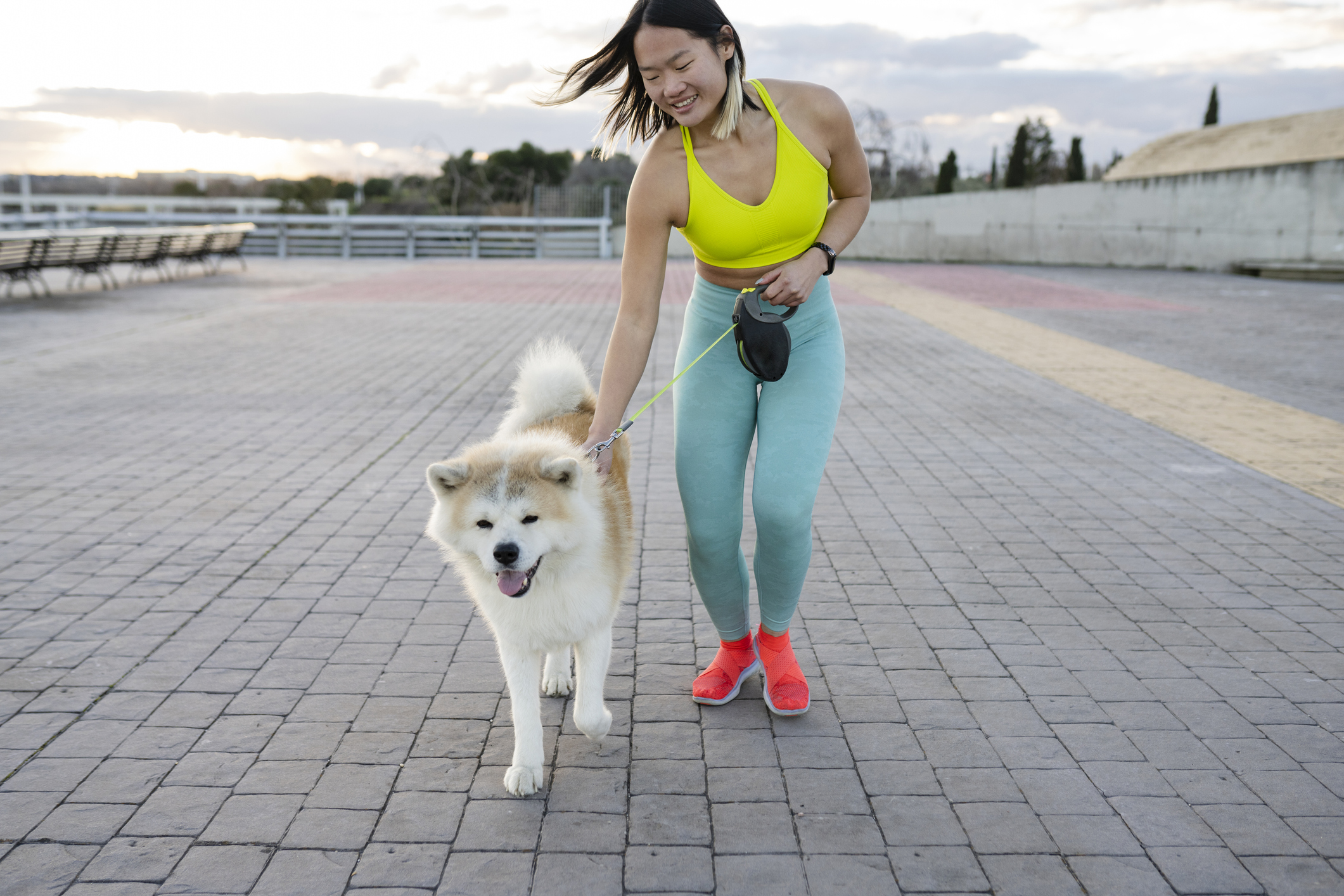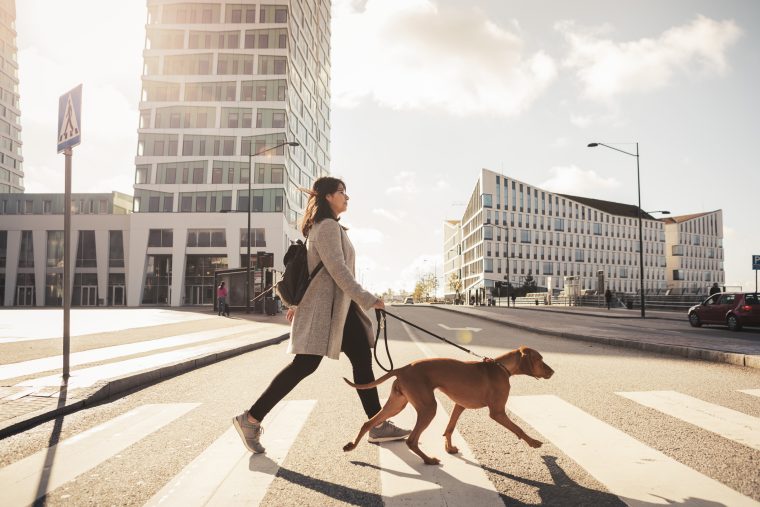
Dog walking is a part of life with a furry friend, but it can hold surprising dangers. Whether you live in an urban area with the chaos of traffic and other dogs, or out in the countryside with coyotes and mountain lions, it’s likely you and your dog face potential hazards. Some of these hazards may result from your dog themselves. A study by researchers at Johns Hopkins University found that traumatic brain injuries were the most common injury related to walking a leashed dog from 2001 to 2020. The researchers found that an estimated 422,659 adults sought treatment in U.S. emergency rooms for injuries resulting from leash-dependent dog walking from 2001 to 2020. This doesn’t mean that dog walking is inherently dangerous, or that you should be afraid. Instead, learn how to safely walk your dog and prevent potential accidents. Our safety tips for dog walking will help keep you and your pet in one piece!
Good leash manners
It may seem silly, but leash manners can prevent injury for both you and your dog. One of the most straightforward safety tips for dog walking is simply to work on leash training. You are susceptible to injury by being pulled over or tripped by an excitable dog who, of course, doesn’t mean you any harm. But if you are to drop the leash, your dog could make a grand escape, or face the dangers of traffic.
Dogs aren’t born with the knowledge of good leash manners. So, make the effort to teach them. Ideally, your dog should also learn commands like “heel” and “stay,” which can be convenient during daily commotion. You may find the best success when pairing your leash training with a harness or a device such as a Gentle Leader, which can redirect your dog from unwanted pulling behavior.
Awareness of your surroundings
Yes, some of your dog’s safety is on your shoulders, too! If you’re frequently a distracted dog walker, you’re at a higher risk of a safety incident than an attentive walker. Set aside a time to walk your dog when you won’t need to worry about answering phone calls or text messages. If you’re more focused on your screen than your dog, you’re giving your dog more opportunities to get into trouble and putting you both in harm’s way. It’s important to be aware of your surroundings when walking, even in a familiar area. Some people may accidentally walk into traffic when distracted by their smartphones. Don’t put yourself or your dog in that kind of danger. However, it’s a good idea to keep your phone in your pocket in case of an emergency. Additionally, it’s a good idea to have your local emergency vet’s number on hand for whatever life may throw at you and your dog.
Respect wildlife
We’ve all seen the aww-worthy videos of pet dogs playing with wild creatures like wolves or deer. While this may seem cute, it’s often disruptive to the wildlife involved, and dangerous for your dogs. Wild animals can pose a threat to your dog. Even if they aren’t behaving aggressively, they can carry illnesses that can impact both you and your pet. Keep a safe distance from wild animals when walking your pet. And in areas where large predators are common, use supervision even in fenced-in yards.
Socialization is key
One of the best ways to prevent mishaps with your dog is by exposing them to as much stimuli as you can, preferably at a young age. Dogs are likely to become spooked (possibly encouraging them to try to pull free) if they hear an unfamiliar noise on a walk. If you had extremely sensitive hearing and had never encountered a motorcycle before, you’d probably be scared, too! Expose your dog to many different people and places so they can grow accustomed to the hustle and bustle of life. This also reduces the risk of reactivity later on, which can make safely walking your dog a challenge.
Looking for more safety tips to keep your canine companion in good health? Check out our guide to safety at the dog park. And for those who love to stay prepared, we have a guide for doggie first aid kits.









